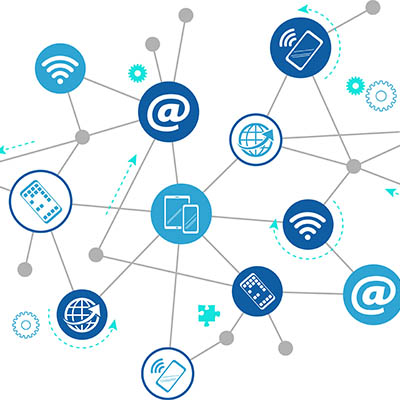Your mobile device management strategy is going to bleed into every other part of your business, especially in the realms of security and productivity. It is of critical importance that you ensure that your mobile device management platform is working toward your company’s operational goals, but it can be challenging at times to look at this type of technology with its many complications. Let’s dive into what makes for a solid MDM platform.
Businesses depend on their communication infrastructures to work with clients, vendors, and their staff. Depending on the specific needs of the company, a business might implement any number of communication solutions, all of which have various strengths, weaknesses, and uses. We’ll walk you through some of the most common communication solutions, as well as why you might want them for your company.
Being future-minded means that you are always on the lookout for the next big thing and how it might affect your business, be it technology or otherwise. Many developing technologies might seem like they will never see the light of day, but the reality is that many of them do have the potential to see business applications in some capacity. Let’s take a look at some of these oddball concepts and how they might transition to business use in the future.
Let’s face it: with so (so) many streaming platforms now available for us to binge a trendy show or revisit a favorite movie on, technology and entertainment have become inexorably linked. When you really think about it, the technology that makes these streaming services possible is truly impressive. Let’s go over this technology together.
Unfortunately, technology does not last forever, and today’s culture of upgrades means that users of smartphones and other devices are constantly updating even when they don’t need to. This practice can extend to businesses, too. Businesses need to have a strategy in place that they can use when it is time to upgrade from older devices, including the way that you dispose of them. Here is how you can effectively dispose of your older connected devices without sacrificing the environment and your data privacy/security.
Paper documents have always been a major part of doing business, whether it’s signing contracts between you and your clients or employee paperwork from when you make new hires. The thing with paper documents, however, is that they can take up a ton of space in filing cabinets, and depending on your habits, they can quickly become unorganized.
Implementing new technology into your IT infrastructure is not something that can be done without serious consideration. If you skip the planning process, the last thing you should expect is for things to work out in your favor. Start by weighing your organization’s specific needs, then consider all of the ways that those needs can be met. Today we are going to discuss how you can make all of this happen in the easiest way possible.
The week of June 14th, 2021 saw many applications and websites suffer from outages. This, consequently, created considerable problems for many organizations that used these services. Businesses suffered from continuity issues, but perhaps the biggest takeaway is just how vulnerable the Internet really is to these kinds of issues. What happened, exactly?
Blockchain technology might be best known for its use with cryptocurrencies such as Bitcoin and Dogecoin, but that’s just one type of blockchain. There are other varieties that could prove useful in certain sectors. Let’s take a look at what they are, how they might be used, and what some of their benefits and shortcomings are.
The modern office has a ton of devices that need to be tracked and monitored, but how do you do it? How do you make sure that you are keeping track of each device, such as what they are, who is using them, and how they are being used? If you are not currently tracking your technology, it’s time to start doing so. An inventory management system can make this task much easier and more efficient.









